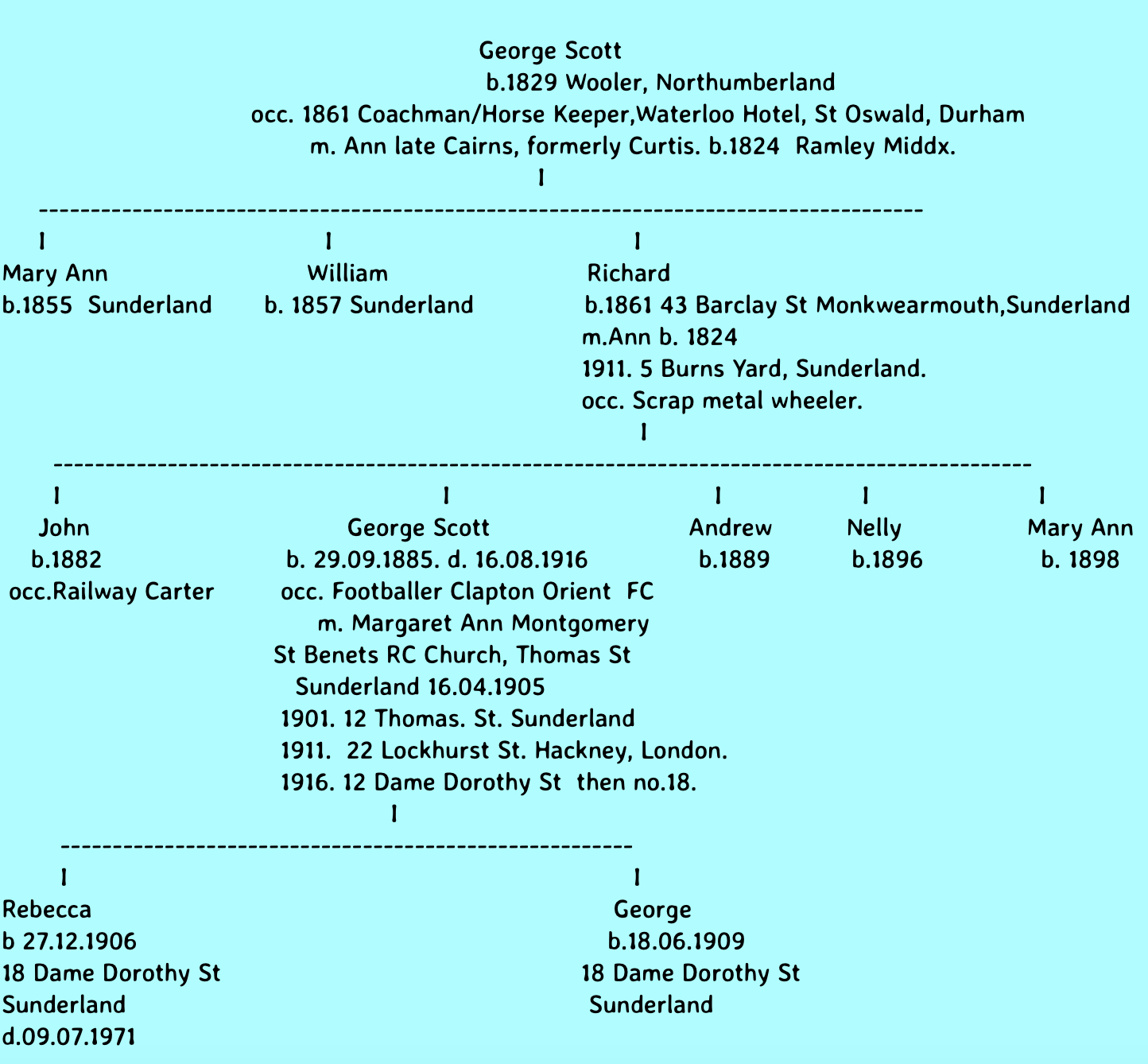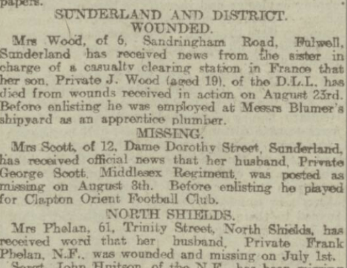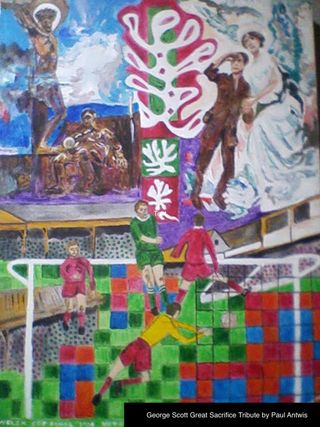George Scott, Footballer
In 1901, aged 16 he lived with his parents and siblings at 12 Thomas Street, Monkwearmouth [middle left on map].
see the Monkwearmouth History page
George's father Richard was born at 43 Barclay Street, Monkwearmouth on 2 February 1861. His father was a coachman (Domestic Servant) at Waterloo Hotel, St Oswald, Durham.
His mother was Ann, late Cairns, formerly Curtis, so was a widow when she married Richard.
George played football for Sunderland West and Braeside before being spotted by Clapton Orient.
He joined Clapton (Leyton) Orient Football Club in 1908.
He was an iconic footballer, playing in the original football league and scoring against the likes of Spurs for 6 years before the outbreak of the Great War in 1914.
He was one of the 'O's' greatest pre-war players. He was famous for having bandy leg. Standing 5'8" tall and weighing 10 st 9 lbs this versatile player made his League debut at Centre-Half in a 2-0 win over Oldham Athletic on Dec 12 1908.
He also appeared in various forward positions during that season.
George Scott was a consistent player and his fine play was rewarded by being picked to represent a London XI versus a Paris XI in France during 1911.
Scott was a loyal servant over the years and he scored many fine goals but none better than the one he scored against Tottenham Hotspurs at White Hart Lane on Boxing Day 1909.
He also scored a hat-trick against Leicester City.
In 1911, George was living with his wife and 2 children at 22 Lockhurst Street, Hackney, London.
George joined the 17th Service Battalion of the Duke Of Cambridgeshires Own Middlesex Regiment. Number F/1583 at the start of WW1. He was one of 40 Pals from Clapton (Leyton) Orient Football Club to join up at the outbreak of the Great War. These Pals were the first to volunteer for Service in the Great Was as members of a football Club.
George was fatally injured at the Battle Of The Somme and died 16th August 1916 at Saint Quentin, Aisne, France in a German Military Hospital. Buried at St Souplet, Departement du Nord
Nord-Pas-de-Calais France* Also died from the Pals were Richard McFadden and William Jones.
His wife, Mary Ann was at 12, Dame Dorothy Street, Monkwearmouth at the time of his death.
George's parents were living at 5 Burns Yard, Sunderland- Richard was a scrap metal wheeler.
*St Souplet is a village about 6 kilometres south of Le Cateau, which is a small town approximately 20 kilometres south-east of Cambrai. St Souplet British Cemetery lies to the south-west of the village after the village of St. Benin.
St. Souplet village was captured by the American 30th Division on the 10th October, 1918. The American troops made a cemetery of 371 American and seven British graves on the South-West side of the village, on the road to Vaux-Andigny; and a smaller British cemetery was made alongside. The American graves were removed after the Armistice, one being taken to the British cemetery with the seven British graves; and other British graves were brought in from other burial grounds and from the battlefields. There are now nearly 750, 1914-18 war casualties commemorated in this site. Of these, one-fifth are unidentified and special memorials are erected to 55 soldiers from the United Kingdom, buried in other cemeteries, whose graves could not be found. The cemetery covers an area of 2,504 square metres and is enclosed by a stone rubble wall.



